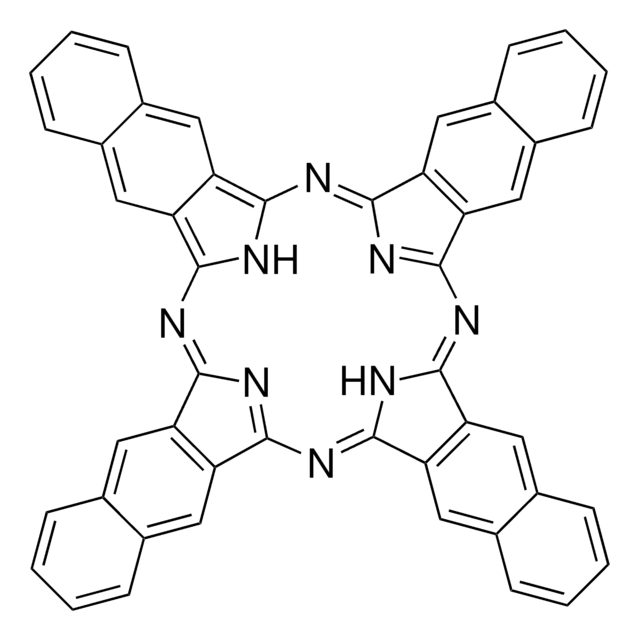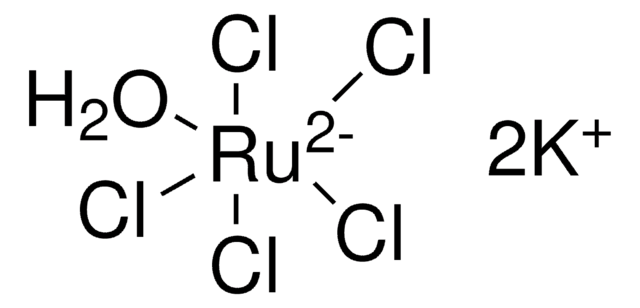764949
Tin(II) 2,3-naphthalocyanine
About This Item
Productos recomendados
Formulario
powder
mp
>400 °C
λmáx.
735 nm in chloronaphthalene
789 nm in chloronaphthalene
830 nm in chloronaphthalene
cadena SMILES
[SnH2]1n2c3nc4nc(nc5n1c(nc6nc(nc2c7cc8ccccc8cc37)c9cc%10ccccc%10cc69)c%11cc%12ccccc%12cc5%11)c%13cc%14ccccc%14cc4%13
InChI
1S/C48H24N8.Sn/c1-2-10-26-18-34-33(17-25(26)9-1)41-49-42(34)54-44-37-21-29-13-5-6-14-30(29)22-38(37)46(51-44)56-48-40-24-32-16-8-7-15-31(32)23-39(40)47(52-48)55-45-36-20-28-12-4-3-11-27(28)19-35(36)43(50-45)53-41;/h1-24H;/q-2;+2
Clave InChI
SCYVSSHNBKWAKE-UHFFFAOYSA-N
¿Está buscando productos similares? Visita Guía de comparación de productos
Descripción general
Aplicación
Palabra de señalización
Warning
Frases de peligro
Consejos de prudencia
Clasificaciones de peligro
Eye Irrit. 2 - Skin Irrit. 2 - STOT SE 3
Órganos de actuación
Respiratory system
Código de clase de almacenamiento
6.1C - Combustible acute toxic Cat.3 / toxic compounds or compounds which causing chronic effects
Clase de riesgo para el agua (WGK)
WGK 3
Punto de inflamabilidad (°F)
Not applicable
Punto de inflamabilidad (°C)
Not applicable
Elija entre una de las versiones más recientes:
Certificados de análisis (COA)
¿No ve la versión correcta?
Si necesita una versión concreta, puede buscar un certificado específico por el número de lote.
¿Ya tiene este producto?
Encuentre la documentación para los productos que ha comprado recientemente en la Biblioteca de documentos.
Active Filters
Nuestro equipo de científicos tiene experiencia en todas las áreas de investigación: Ciencias de la vida, Ciencia de los materiales, Síntesis química, Cromatografía, Analítica y muchas otras.
Póngase en contacto con el Servicio técnico









